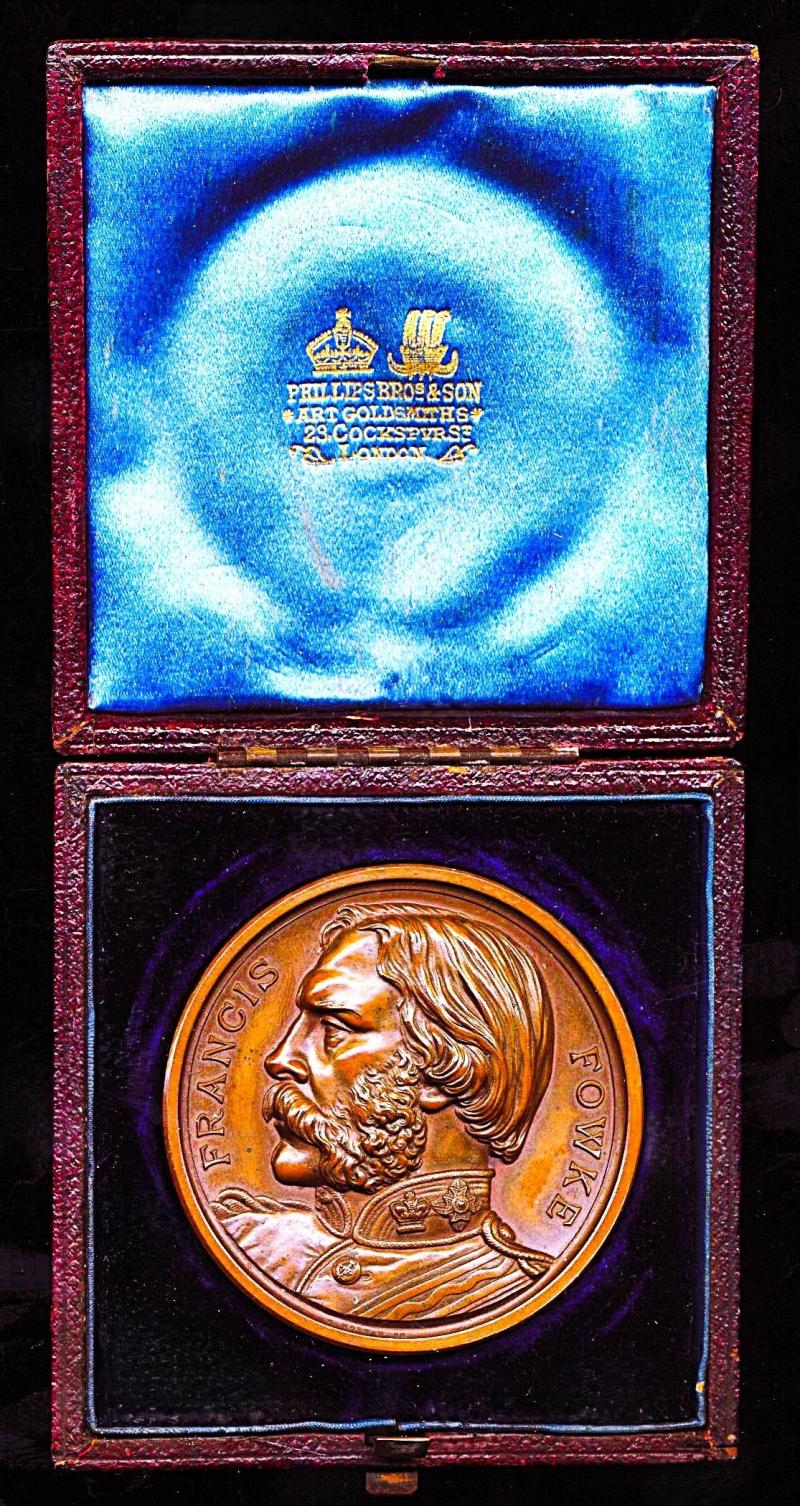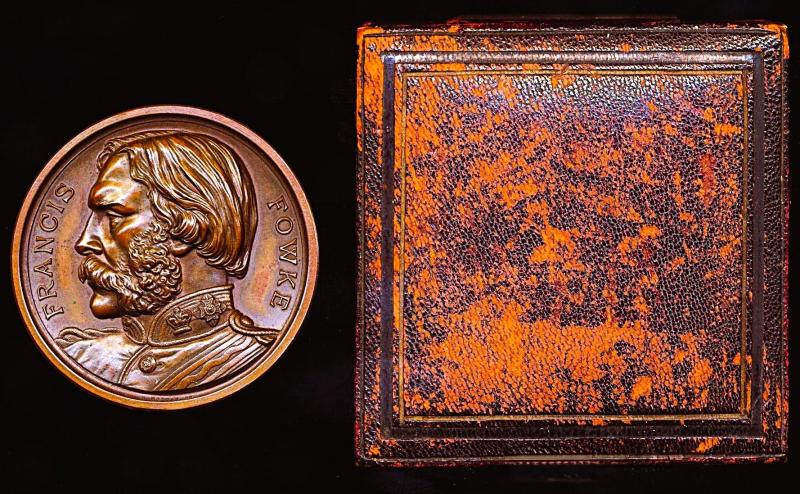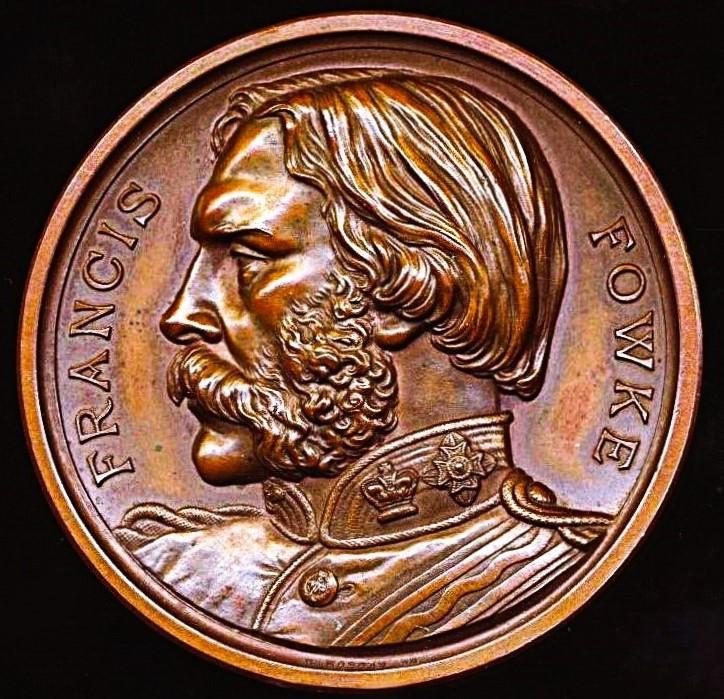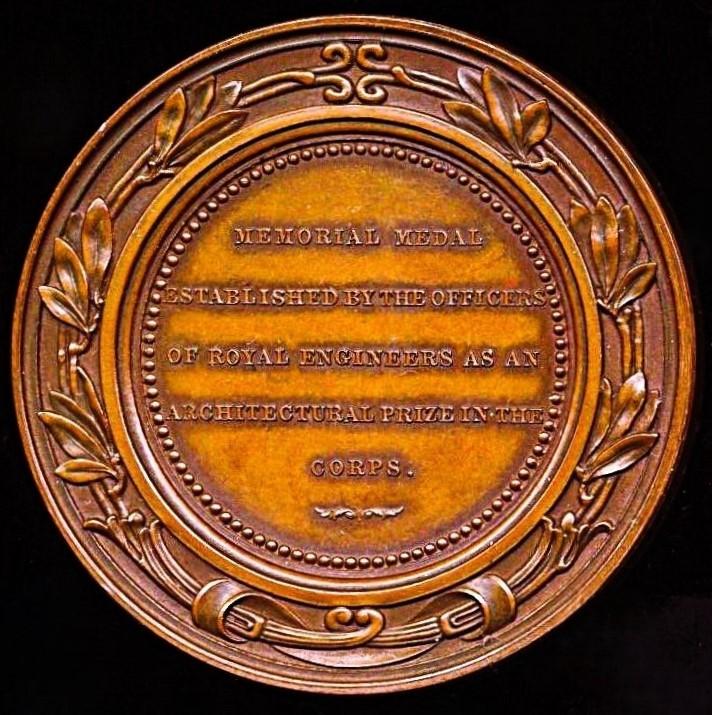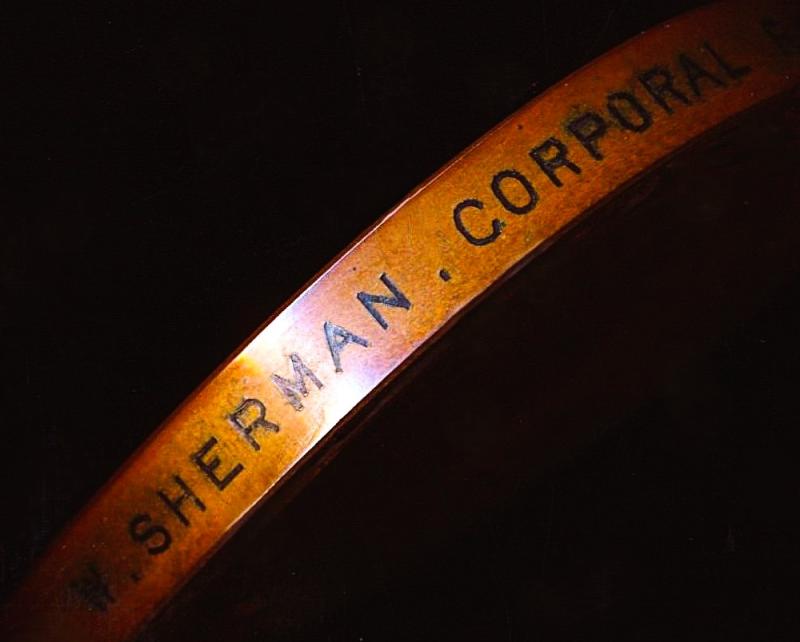Royal Engineers: Fowke Memorial Medal. Bronze (W. Sherman. Corporal R.E.)
Instituted: Established by the Royal Engineers Institute in 1872, and awarded annually in silver, and in bronze.
Designer: George Thomas Morgan
Obverse: Legend 'Francis Fowke' with portrait of Captain Francis Fowke, R.E. wearing tunic with 'Captain's' rank insignia on the collar
Reverse: An ornate laurel border, with central inscription on 5 x lines 'MEMORAL MEDALS ESTABLISHED BY THE OFFICERS OF ROYAL ENGINEERS AS AN ARCHITECTURAL PRIZE IN THE CORPS'
Metal: Copper
Dimension: 59mm
Depth: 9mm
Weight: 124g
Named: W. Sherman. Corporal R.E.
Sold together with:
- Original plush hinged leatherette case of issue. This with makers address on inner silk panel (Philips Bros & Sons)
The medal makers logo / and address is surmounted by a Victorian Crown and Prince of Wales Fleur de Lys, Philips Bros & Sons, Art Goldsmiths, 23 Cockspur Street, London
Francis Fowke (7 July 1823 – 4 December 1865) was a British Engineer, Architect and a captain in the Royal Engineers, who was educated at the School of Military Engineering. Among his projects were the Prince Consort's Library in Aldershot, the Royal Albert Hall and parts of the Victoria and Albert Museum in London, the Royal Museum in Edinburgh, and the National Gallery of Ireland in Dublin. He was also responsible for planning the 1862 International Exhibition in London
The Fowke Medal was awarded by the Institution of Royal Engineers, as an annual prize for young officers who demonstrated outstanding architectural ability at the School of Military Engineering. From 1872, the medal was awarded annually in silver for Commissioned Officers, and in bronze for Non-Commissioned Officers. With the demise of great architectural works the Silver medals ceased being awarded to Officer's sometime prior to 1940. Since circa 1946, the medal is now only awarded in bronze to Non-Commissioned-Officers. who are the top student in each of the Clerk of Works (Construction), (Electrical), (Mechanical) and Military Plant Foreman's courses at the Royal School of Military Engineering (RSME)
William Sherman, son of William Sherman (a 'Foundryman') & Emma Sherman, was a native of Rushmere, Ipswich, Suffolk, England, where he was born on 6 April 1859. By trade a 'Blacksmith', William was 18 years & 1 month of age when he enlisted in the British Army at Ipswich, on, 7 February 1876, on which date he was posted to the Corps of Royal Engineers and given the regimental number No. 13439. By the time he took his final discharge (at his own request) from the British Army on, 7 March 1894, William had accumulated 18 years 29 days reckonable service 'With the Colours' towards pension. During his service he had served overseas in Halifax, Nova Scotia Canada, and at Gibraltar. Evidently a professional soldier of considerable skills, his conduct was described as 'Exemplary', and he had obtained a First Class Education Certificate and Passed Course of Instruction in 'Construction' at the School of Military Engineering, in 1883. He was never reduced in rank during his career, and his record of promotions were:
- Sapper: 07/02/1876
- Lance Corporal: 22/11/1877
- Second Corporal: 28/10/1878
- Corporal: 01/12/1880
- Company Sergeant Major Field Works: 08/08/1883
- Quartermaster Field Works: 08/08/1889
During his military service he married Rebecca Amelia Vigar on, 9 May 1880
Although the recipient had 'just' completed 18 years 29 days service by the time he took his discharge (time required for qualifying service was reduced to 18 years in 1870), there is no inducation in his extant service papers held and accessible at The National Archives that he was ever awarded a Long Service and Good Conduct Medal. Thus, the award of the highly prestigious 'Fowke' medal was the only named medal that William Sherman received for his military career.
In the 1901 National Census for England & Wales, William Sherman is recorded as employed as a Clerk of Works (Building) with the Small Arms Factory. At the time he was residing with his wife and three children (a son and two daughters) at their residence located at The Marsh, Waltham Abbey, Waltham Abbey, Essex). By the time of the 1911 National Census William was recorded employed as Clerk of Works (Building) at the Royal Gunpowder Factory at Waltham Cross, and residing with his wife and youngest daughter Alice Elizabeth Sherman, at 65a High Bridge Street, Waltham Abbey, Essex. William Sherman is reported to have died at Epping, Essex, England sometime during the last quarter of 1940
Note: The campaign and long service medals of the recipients Grandson, Regimental Sergeant Major Sherman Royal Engineers, are being sold separately on the website, see item code 24776
The recipients service papers are extant and accessible at The National Archives
Photograph in Uniform: An attributed Carte de Viste studio portrait of the recipient wearing Canada Service 'Cold Weather Uniform' is accessible on the Ancestry Genealogical website
A magnificent medal - and a rare example of the Victorian issue awarded annually to an outstanding Non-Commissioned-Officer of the Royal Engineers
Rare
Condition: Medal EF
Code: 24714
245.00 GBP



